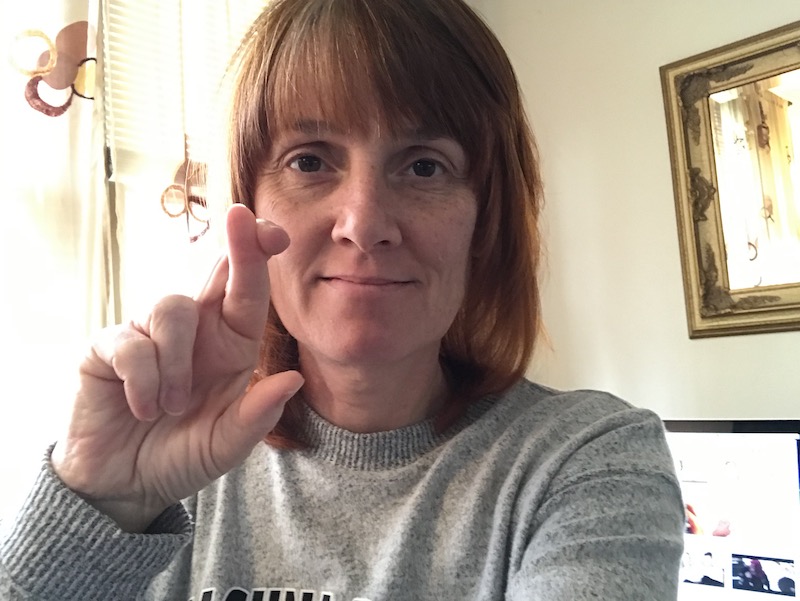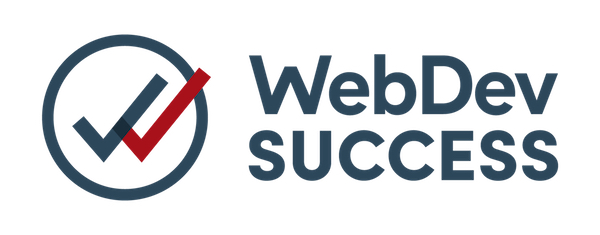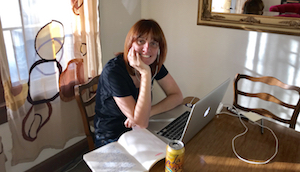
When I started my business of creating websites, I called myself a website designer without knowing what that really meant. “Website designer” seemed like the clearest way to communicate my services to a potential customer.
Thanks to some ready-made design templates, I was able to pull off some attractive websites. This approach worked for low-budget clients.
Then, I won my first project with a client who had specific expectations around graphic design. The ready-made design templates I had been using wouldn’t cut it.
I needed the help of a graphic designer.
Here’s where I tell you the difference between website design and website development. But, if you’re asking this question, then there’s more that you don’t know that you don’t know. Keep reading the rest of my story after I tell you the difference between design and development.
Website Design
Website design is the process of designing the layout and graphics for a website. Design often includes the selection of fonts, colors, and photography for the website. The website design is delivered as a PDF.
Graphic designers are frequently hired to do the creative work of website design.
Website development skills are not required to design a website.
Website Development
Website development begins after the design is complete and approved by the client. The developer takes the design and graphic elements and uses them to build the website. WordPress is the most popular platform for building websites. But, it’s not unusual for websites to be built using raw code (HTML, CSS, and Javascript) or other platforms such as Drupal, Squarespace, and Joomla. Website Developers build the final product of a functional website.
Website design skills are not required to develop a website.
Back to me and my first experience with hiring a graphic designer for help with website design….
I wasn’t thrilled about spending the money to hire a designer. But, I had to do it.
My time was running short and I just didn’t have the design chops. The graphic designer I hired produced the complete website design and provided me with all of the design assets. My part of the work became straightforward with the design assets at my fingertips. With the help of a designer, I built a beautiful website and the entire process was less stressful. My client was ecstatic and I’ve never regretted the investment of money for that design.
That decision to hire a graphic designer transformed my business. Hiring a specialist to help me with one piece of a larger plan was a lightbulb moment for me. That’s when I decided to go for the agency model. Maybe you’ve heard the buzzword “agency model” and not really understood what it really meant. The agency model is a way of doing business where somebody brings in the business (that could be you) and then specialists work on the different aspects of the website project to completion. Your role is to coordinate the specialists: graphic designers, developers, SEO’s, copywriters, and branding experts. As your agency grows, you might even choose to step away from the project coordination and hire someone for this responsibility, too.
That’s the agency model. Somebody brings in the project and then specialists carry out the project.
When I began operating with the agency model, the design quality of my portfolio improved and a new type of customer showed up to request my services. This new customer had a larger budget and higher expectations. My rates and revenue increased exponentially.
Your ideal client wants a beautiful, secure, and functional website that brings in sales. As the website professional, you know there are many pieces that come together to create this finished product. It’s your job to bring the pieces and people together and deliver the final results. So, stop asking yourself how you can possibly learn and do everything that is required to be successful. Instead, find and connect with the specialists you need to help you build a successful agency.









Although I became a volunteer web site developer after I retired, there are many experiences from my career as a Program Manager in high tech firms that carry over to the Agency model that Emily talks about in this article.
#1 – Project coordination – As projects become more complex and not done in house, this role becomes more important. While people don’t like to be micromanaged, the person in this role still has to be comfortable that they’ll do what they say they’re going to do when they say they’ll do it. “Trust but verify” was the mantra I used.
#2 – Get the project requirements nailed down before you begin – The largest reason that projects fail is due to inadequate definition of requirements. Sure the scope changes as you move along, but it is really, really worth it to spend the time at the beginning of the project to get the requirements as clear as they can be.
Yes! I could not have said it better. Especially your point about minimizing “scope creep”.
My proposals get more detailed as I get more experience.
But, even with a detailed proposal, I need to review, discuss, and revisit the proposal with my client.
There are always questions and clarifications needed. And, it’s not like it’s possible to cover everything in advance (I wish!).
I just have to be willing and prepared to have the ongoing conversations.
Thanks for your input, Carol!
For three years I was a free-lance software developer. Customers always wanted fixed-price bids, and I get that. Almost all of the time I was able to come up with a fixed-price bid that I thought was fair and reasonably profitable for me.
BUT, if their project contained certain features where I had to depend on them for access to some external system or resource, I would charge them time and materials for that portion of the project. They then had some skin in the game to make sure I got what I needed and kept their cost down.